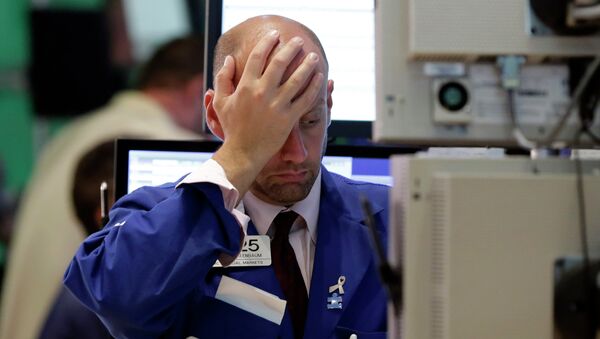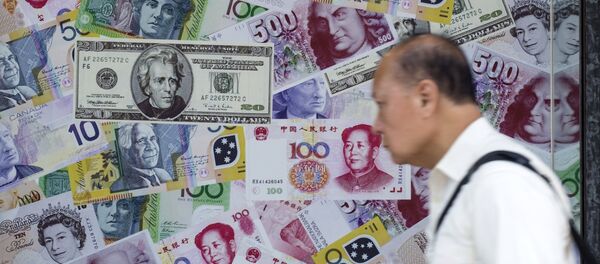Kristian Rouz — Wall Street is retreating during Tuesday's trading as China's stock-meltdown, currency devaluation and slowing economy weighed on markets across the world, also triggering a deeper decline in commodities prices,, effectively hitting the US producers. The bag of solid US housing market data and the optimistic forecast on Q3 economic expansion were all erased by Wal-Mart having reported weaker-than-expected performance and forecast attributed to petty thieves activity.
Afternoon trading in New York is rather a selloff, exacerbated by investors' nervousness ahead of a Federal Open Market Committee publication due early tomorrow. Wal-Mart dropped 3.3% to its 2.5-year lowest on poor commercial results, thus being the biggest downward factor for both the Dow and the S&P. The metals-producer Freeport McMoRan Coppers and Gold slumped 2.8% on lower copper prices — thanks to mainland China, where the slowing economy undermined effective demand for metals, among other raw materials. Home Depot, the construction and home improvements retailer, rose 2.4% on a better forecast, with the US homebuilder's optimism being a supporting factor.
All 10 S&P sectors are retreating, with energy equities leading losses (-0.63%), with Exxon having shed 1.3%. The raw materials sector is down 0.6%. Today is the fourth consecutive session of losses in the US.
At 2:08 PM, the Dow Jones Industrial Average Index dropped 0.15% to 17,519.43 points, the S&P 500 Index shed 0.34% to 2,095.22 points, and the Nasdaq Composite lost 0.66% to 5,075.95 points. Trading volumes on the S&P are 19% below the monthly average with investors cautious before tomorrow's Fed minutes publication.
With the Chinese meltdown a significant destabilizing factor and weaker-than-expected US consumption, the market is awaiting major developments in broader US economy and improvements in corporate earnings situation. Now, while the US economy is forecast to expand at a mediocre pace, and a strong dollar weighing on US earnings in the medium-term, US stocks are bound to remain flat.
While the earnings season is weak due to a stronger dollar, some 75% of the S&P-listed enterprises reported better figures than expected. That means, in the current unfavourable environment, less-than-expected losses in most cases rather than actual growth.
US market volatility is near its lowest, with the Chicago Board Options Exchange Volatility Index (VIX) only rising 6.3% to 13.84.



